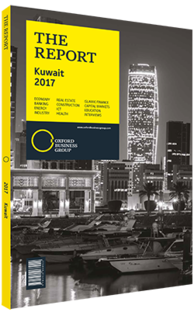Kuwait's petrochemicals segment broadens its product base
In September 2016 Mohammad Al Ajmi, director-general of the Public Authority for Industry, announced plans to boost Kuwait’s industrial output by 25% in the coming years. Although the state controls nearly 101bn barrels of proven crude deposits, the drop in oil prices has compelled the government to push ahead with a host of economic reforms aimed at diversifying the economy through industrial expansion. The success or failure of this expansion and the expected double-digit growth in industrial output will largely depend on the country’s petrochemicals and plastics segments.
Economic Contribution
Kuwait first ventured into commodity petrochemicals in the 1990s, producing polypropylene, polyethylene and monoethylene glycol for the first time in 1997. Now, two decades later, petrochemicals provide the highest added value to the country’s industrial output. The Kuwait Direct Investment Promotion Authority has forecast significant growth in petrochemicals output over the next several years, rising from 7.57m tonnes per annum (tpa) in 2014 to 10.54m tpa in 2019. The added production should go some way towards boosting export revenues, with organic chemical exports already valuing KD77.9m ($257.7m), or 2.2% of total exports, between April and June 2016, followed by plastics and plastic products at KD60m ($198.5m), or around 1.7%.
Sector Structure
State-owned Kuwait Petroleum Company (KPC) is the holding firm for Kuwait’s energy enterprises, currently operating eight subsidiaries including Petrochemical Industries Company (PIC), which manufactures fertilisers, olefins and aromatics, and Kuwait Integrated Petrochemical Industries Company, approved as a new KPC subsidiary in October 2016. With estimated capital of KD1.8bn ($5.9bn), of which roughly KD450m ($1.5bn) is paid-up, the new subsidiary will execute and operate major downstream refining and petrochemicals projects, including construction and integration of the 615,000-barrel-per-day (bpd) greenfield Al Zour refinery, along with an associated petrochemicals complex and a new liquefied natural gas import terminal. When completed in the second quarter of 2022, the production capacity of Al Zour will make it one of the largest refineries in the region. Construction of the project, together with the planned upgrades at the Mina Abdullah and Mina Al Ahmadi refineries, is expected to increase Kuwait’s refining capacity to over 1.5m bpd, which will in turn strengthen the country’s petrochemicals segment. These projects are also expected to increase availability of naphtha, which can be used as an alternative feedstock for petrochemicals, alleviating concerns around the shortage of gas feedstock.
Increased Competition
With large shale-based petrochemicals capacity scheduled to come online in the US between 2017 and 2019, the petrochemicals industry views the shift to liquid feedstock as an urgent step necessary to differentiate GCC product lineups from those in the US. The Olefins III project, carried out by PIC, is one of only three major projects using liquid feedstock to take shape in the region over 2015-25.
PIC is also pursuing geographic expansions. In 2016 it purchased a 25% equity stake in SK-Advanced, a propane dehydrogenation venture owned by South Korea’s SK Gas and Saudi Arabia’s Advanced Petrochemical. The project was reported to have reached 105% of its designed capacity of 600,000 tpa by November 2016.
Underscoring growth across petroleum product categories, Kuwait-based Integral Plastic Industries announced plans in late 2016 to establish a $272.2m plant in Abu Dhabi’s Khalifa Industrial Zone. Production is expected to commence in the first quarter of 2018, with a goal of producing 15,000 tonnes of plastic bottles, caps and packing strip rolls each year.
Kuwait and the broader GCC are under growing pressure to diversify. By developing core petrochemicals capacity through geographic expansion and improving domestic efficiencies, Kuwaiti petrochemicals firms can better weather lower prices and increased competition.
You have reached the limit of premium articles you can view for free.
Choose from the options below to purchase print or digital editions of our Reports. You can also purchase a website subscription giving you unlimited access to all of our Reports online for 12 months.
If you have already purchased this Report or have a website subscription, please login to continue.

